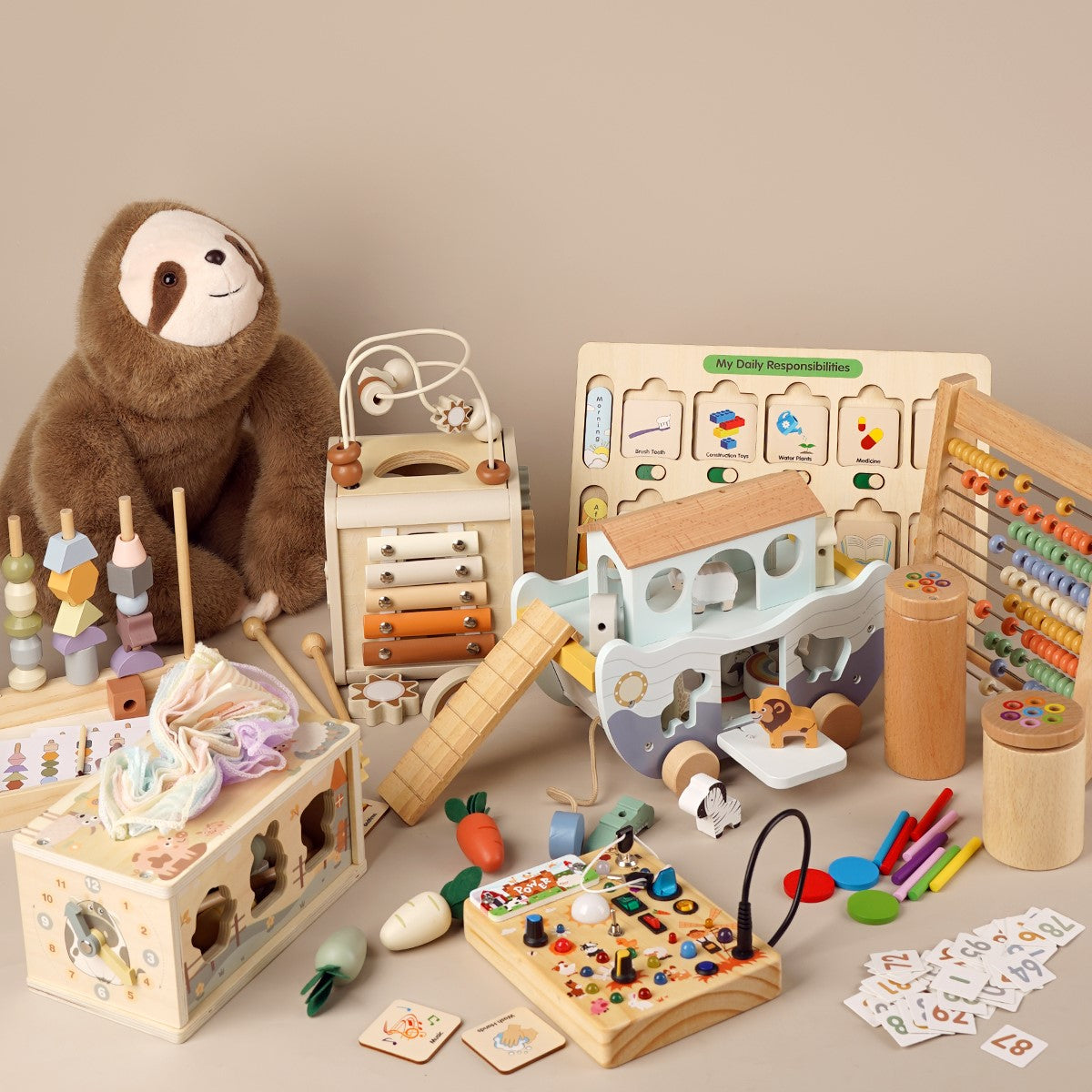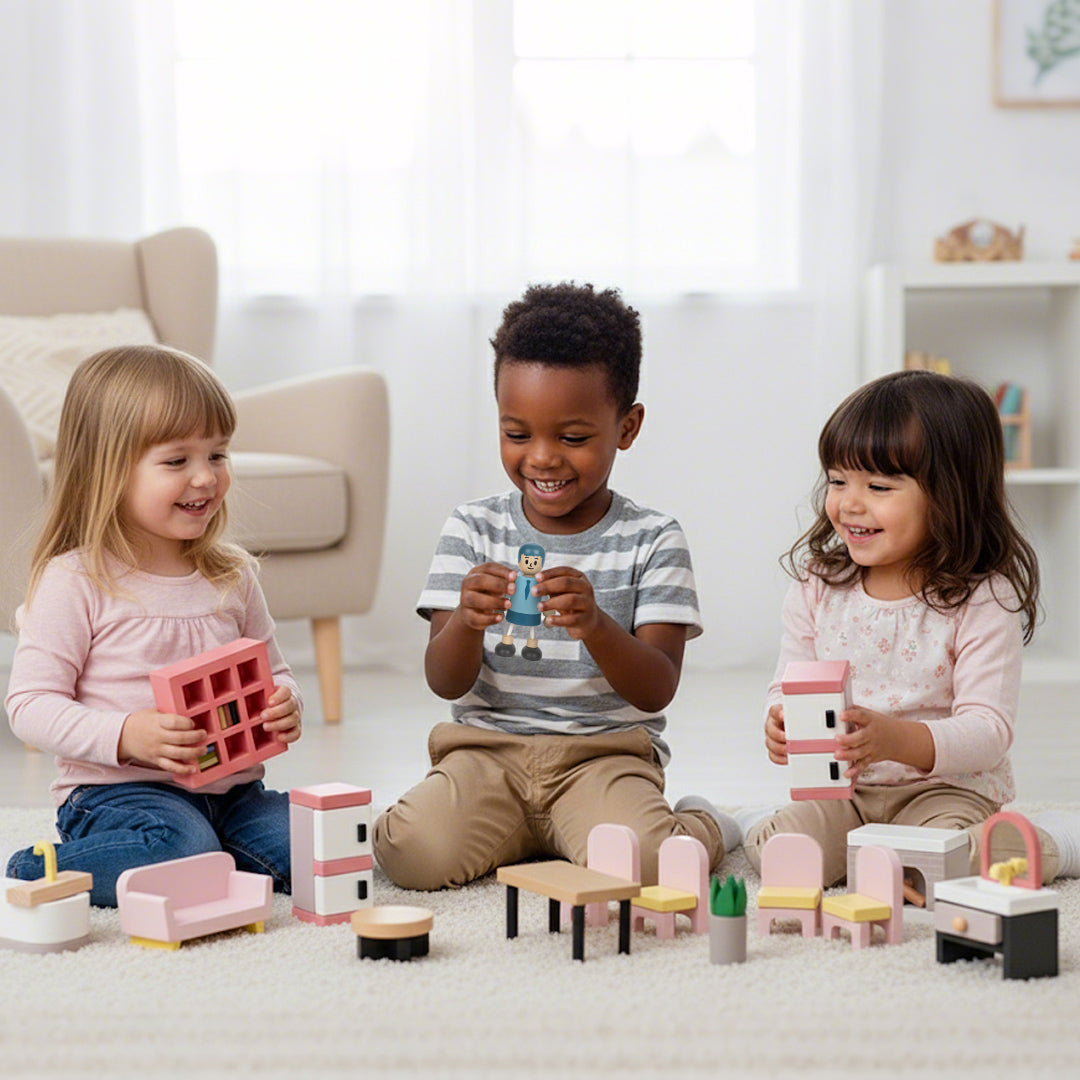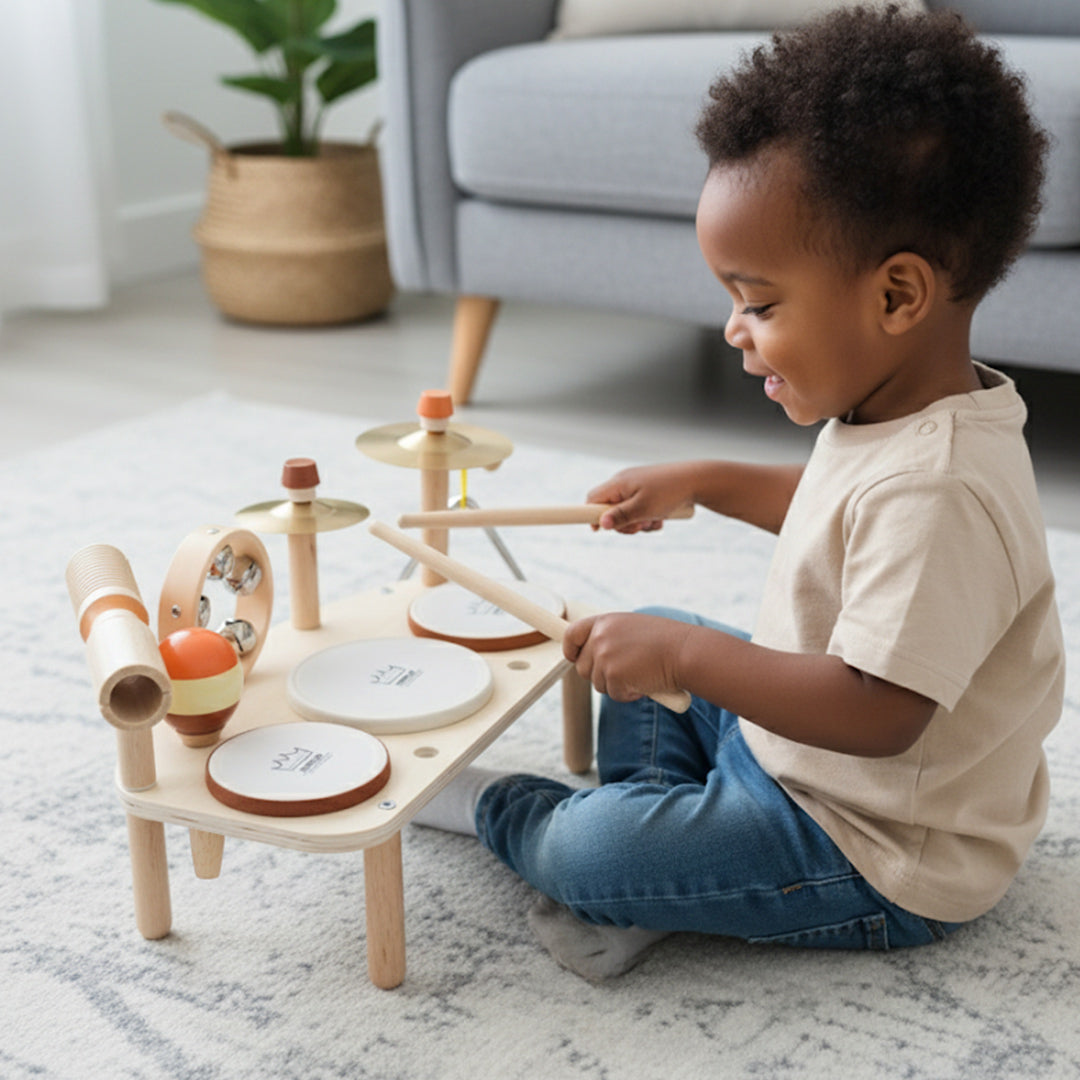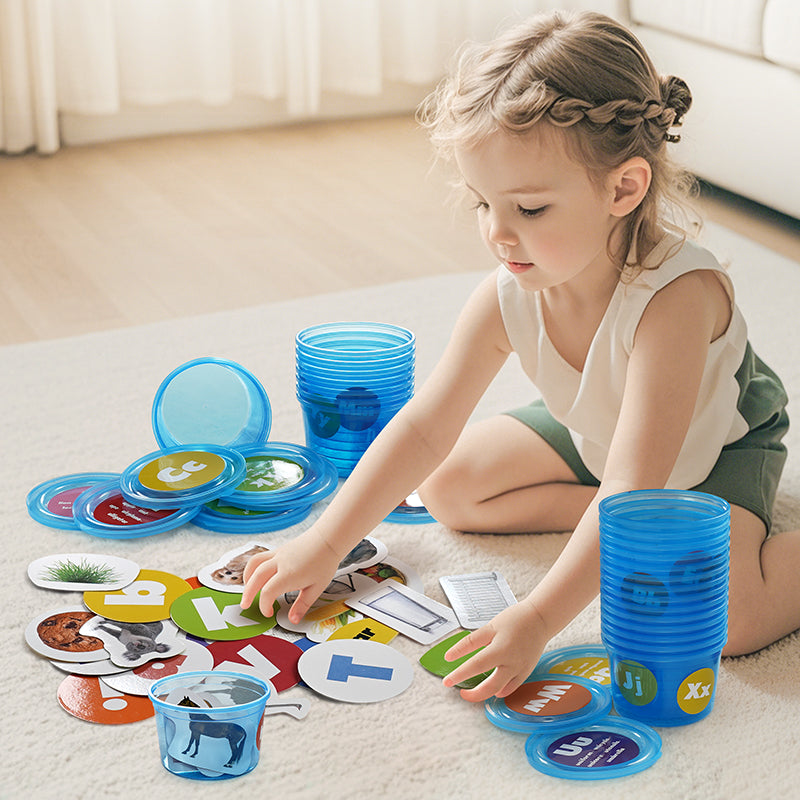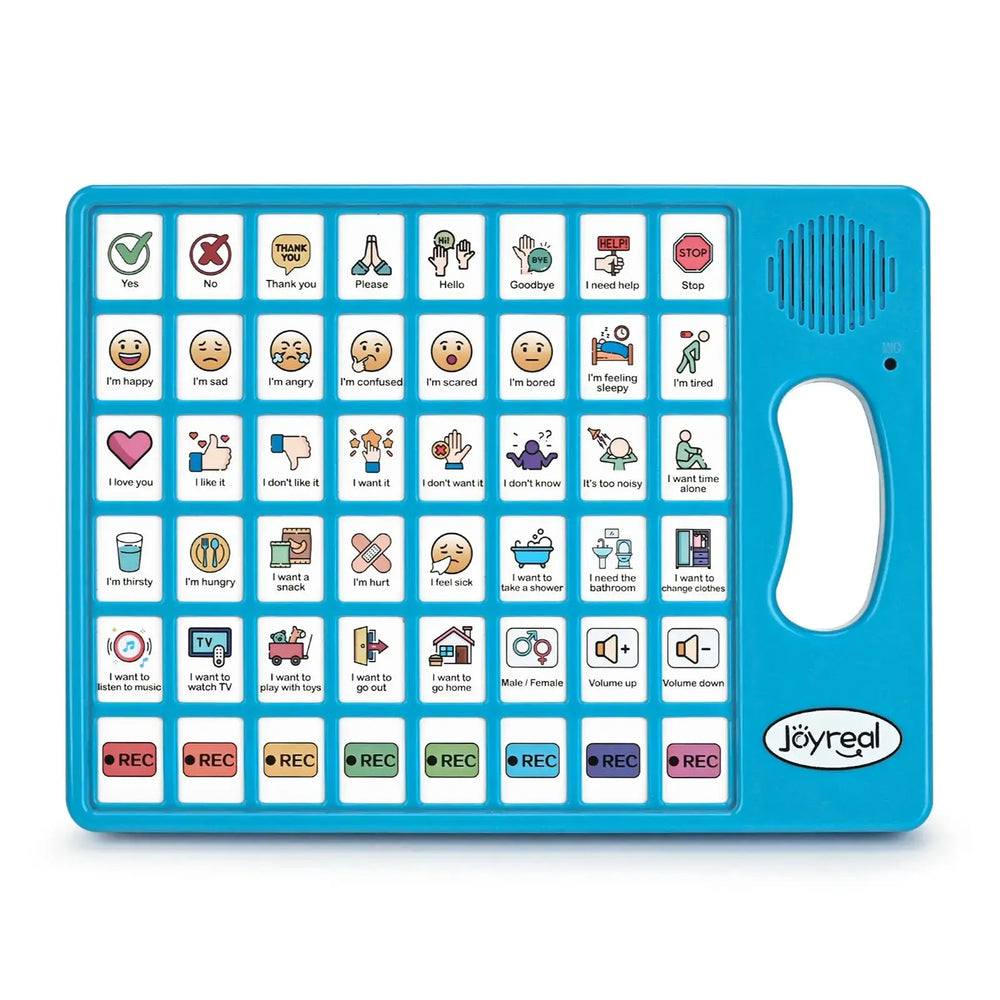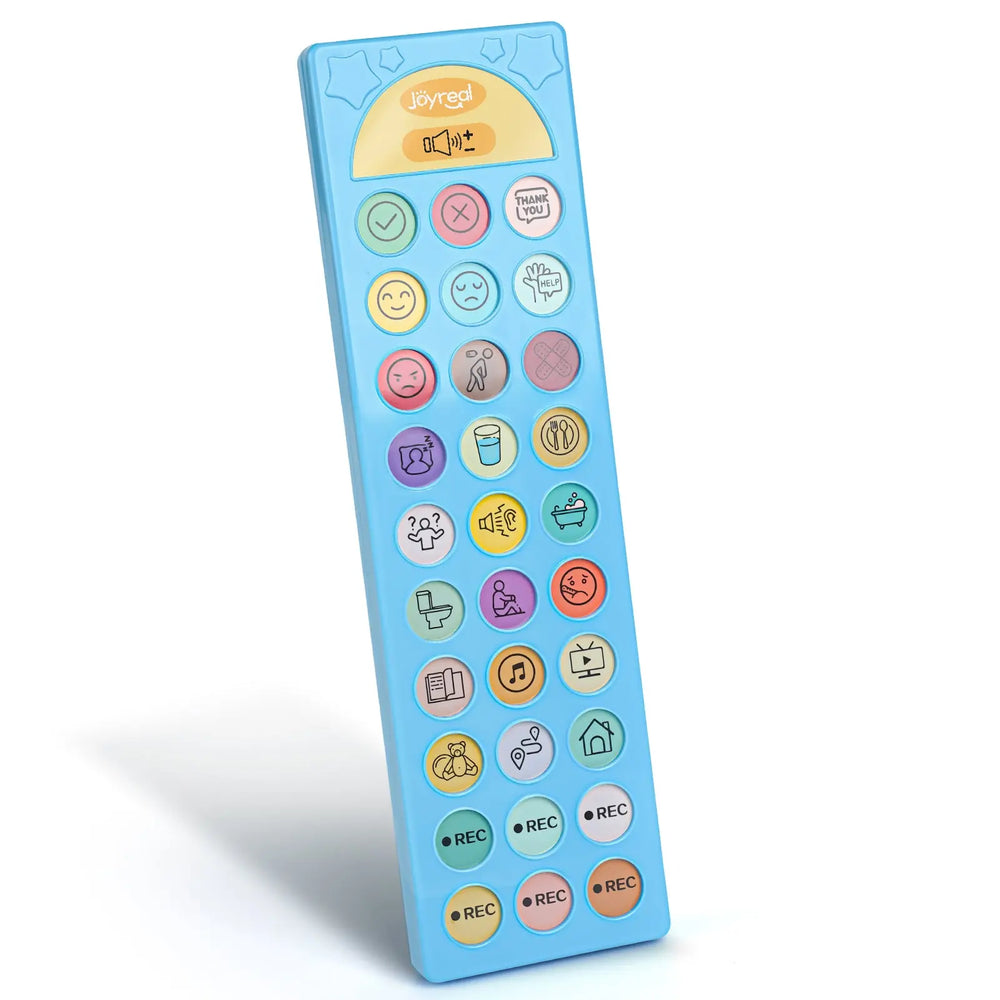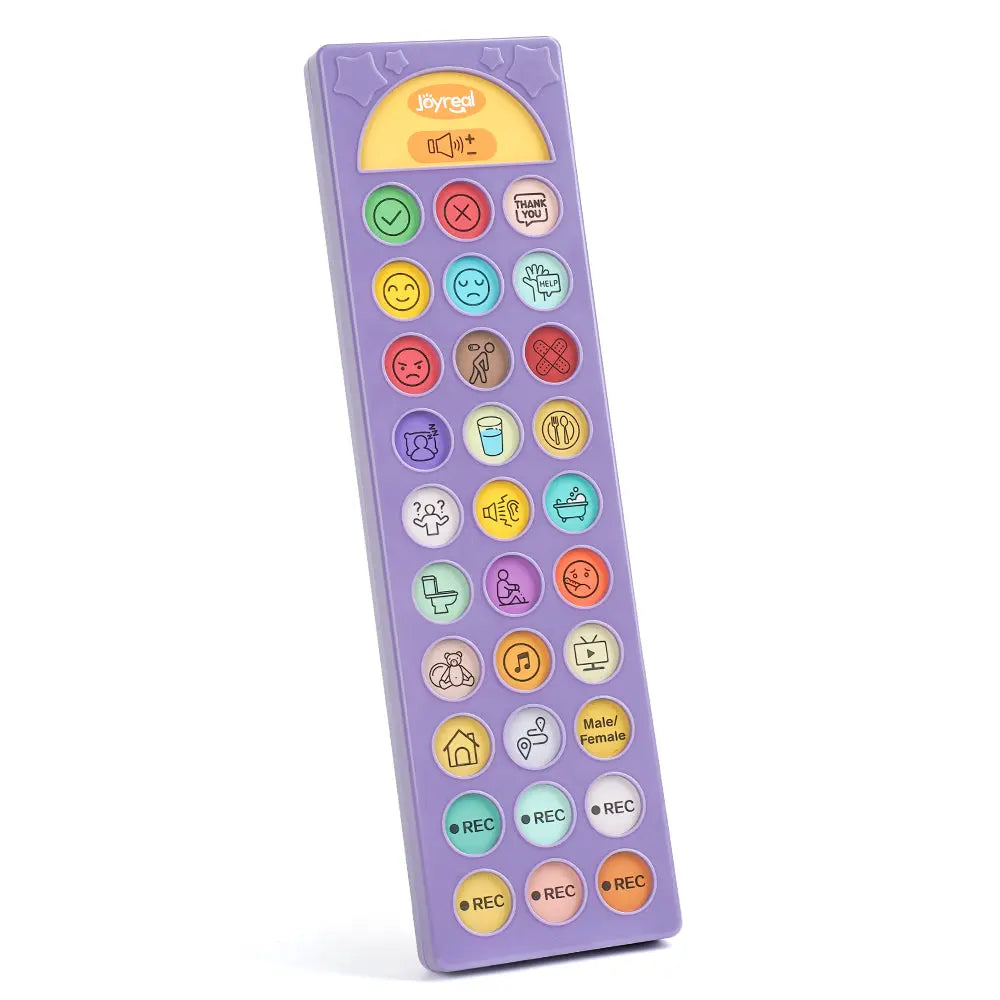How Joyreal AAC 2.0 is a Game-Changer for Families Facing Autism Communication Challenges
Autism Spectrum Disorder (ASD) is a complex neurodevelopmental condition that impacts social interaction, communication, and behavior. One of the most profound challenges for individuals with autism is the difficulty in expressing their thoughts, needs, and emotions. For families, this can lead to feelings of isolation, frustration, and an overwhelming sense of helplessness. However, recent advancements in technology have paved the way for life-changing solutions. Communication devices for autism are emerging as powerful tools that not only empower individuals on the spectrum but also transform the lives of their families.

The Struggles of Communication in Autism
For many children and adults with autism, verbal communication may not come easily. This can be due to a variety of reasons, including difficulties with speech, processing language, or understanding social cues. When verbal communication is limited or absent, alternative methods of expression become vital. Unfortunately, without effective communication tools, individuals with autism may resort to behaviors that are often misinterpreted, such as aggression or withdrawal. This can create challenges for families trying to understand their loved ones’ needs and feelings, leading to frustration on both sides.
The Rise of Communication Devices for Autism
In recent years, assistive communication technology has come to the forefront, offering new hope to those with communication difficulties. These devices use a combination of speech-generating technology, visual aids, and interactive features to help individuals communicate more effectively. Whether through tablets, specialized software, or augmentative and alternative communication (AAC) devices, these tools are tailored to meet the unique needs of people with autism.
Communication devices can range from simple picture exchange systems to more sophisticated systems that generate speech based on touch or text input. With the right technology, individuals with autism are able to express their needs, wants, and emotions, fostering a sense of autonomy and self-expression. Here’s how communication devices are making a difference:
1. Empowering Individuals with a Voice
One of the most significant impacts of communication devices for autism is the empowerment they offer. Many individuals on the spectrum may struggle to express themselves verbally, but a communication device allows them to share their thoughts in a way that feels comfortable and effective. Whether through symbol-based communication or text-to-speech software, these devices provide individuals with the tools to communicate in real-time. This newfound ability to convey thoughts, ideas, and preferences promotes greater independence and a stronger sense of self-worth.
2. Enhancing Family Understanding and Connection
Communication devices offer families a chance to better understand their loved one’s needs and emotions. For parents and caregivers, seeing their child communicate—whether it’s expressing discomfort, sharing excitement, or simply asking for help—can create an emotional breakthrough. When communication barriers are reduced, families can form stronger connections, reducing the sense of isolation that often accompanies ASD. Understanding a child’s needs also reduces the likelihood of meltdowns or frustration, as there is less guesswork about what the individual may be experiencing.
3. Fostering Social Interactions and Inclusion
Effective communication is key to building relationships. When individuals with autism have the tools to engage in conversations, they can form better social connections. Communication devices enable children with autism to interact with peers, teachers, and others in their community. These devices can be particularly helpful in educational settings, where socialization is a significant part of the learning process. The ability to express themselves means children are less likely to be isolated, and more likely to engage with others in meaningful ways.
4. Improving Quality of Life
The improvement in quality of life is perhaps the most profound benefit of communication devices for autism. By providing a method for effective communication, these devices reduce stress for both the individual and their family. For parents, the ability to understand their child’s wants and needs in a more direct way can reduce feelings of helplessness. For the individual with autism, being able to communicate effectively opens up a world of possibilities, whether that’s expressing themselves at home, participating in school activities, or building friendships.
5. Personalized Solutions for Unique Needs
Every individual with autism is unique, with their own strengths and challenges. Communication devices for autism come in a variety of forms, ensuring that each person can find the solution that works best for them. Some devices use picture exchange systems (PECS), where the individual selects images to convey messages. Others use speech-generating devices, where the user can either type out words or select pictures that the device then converts into speech. The diversity of options means that families can find a device that aligns with their loved one’s communication preferences, making the solution more effective and personalized.
6. Enabling Greater Independence in Daily Life
When children or adults with autism are able to communicate their needs and desires, they are better equipped to navigate the world independently. Communication devices can help individuals participate in daily activities, from making choices about what to eat or where to go, to expressing discomfort or telling a caregiver when they need assistance. This promotes autonomy, which is crucial for building confidence and self-sufficiency, both of which are important for long-term success and well-being.
Autism Communication: The Joyreal AAC 2.0 Breakthrough
For families navigating the challenges of Autism Spectrum Disorder (ASD), communication devices are nothing short of revolutionary. Among the emerging options, Joyreal’s AAC Devices for Autism have proven to be a game-changer. With the introduction of their Joyreal Autism Communicator 2.0, this advanced upgrade takes the user experience to a whole new level, offering both functionality and ease of use for individuals with communication challenges. Let's take a closer look at what makes the Joyreal Autism Communicator 2.0 a standout tool for families and caregivers.
What Is the Joyreal Autism Communicator 2.0?
The Joyreal Autism Communication Device has always been a valuable tool for individuals with autism who face challenges in verbal communication. Now, with the release of Joyreal Autism Communicator 2.0, this device has been significantly upgraded, offering a new level of personalization and functionality. With its expanded features, the 2.0 version is designed to cater more effectively to the diverse communication needs of individuals on the autism spectrum.
Key Features of Joyreal Autism Communicator 2.0
- 1. From 24 Keys to 37 Customizable Keys
One of the most noticeable changes in the 2.0 version is the upgrade from 24 keys to 37 letter keys. This expanded layout ensures that a wider range of essential daily needs is covered, allowing users to more easily communicate everything from basic requests to more complex needs. With additional keys, users can quickly navigate the device, making communication smoother and more efficient. This layout is especially beneficial in helping individuals express themselves in various everyday situations—whether it’s asking for help, expressing emotions, or requesting food.
- 2. Customizable Sound Expressions
In a bid to provide even more personalized communication, the 2.0 version now allows for 8 customizable sound expressions. Caregivers and users can record and upload their own voice prompts or choose sounds that best suit their communication style. These pre-recorded phrases (like "I’m thirsty," "I need help," or "Let’s go") make it easier for individuals with autism to convey their needs in a familiar, comfortable tone. Whether it's a phrase or simple sound that reflects a routine, this customization allows the device to feel more aligned with the user’s personal preferences and daily communication.
- 3. Voice Tone Customization: Male and Female Voice Options
An exciting addition to the 2.0 model is the ability to switch between male and female voice options. This feature makes the device even more personal, allowing the user to choose a voice that feels comfortable or familiar. Whether it’s for matching the user’s identity, personal preferences, or simply making the device feel more natural, this option ensures a greater level of customization.
- 4. More Personalization for Unique Needs
The combination of 37 keys, 8 customizable sound expressions, and male/female voice options allows the Joyreal Autism Communicator 2.0 to become truly adaptable to the user's evolving needs. Caregivers can program the device with specific phrases that are most useful to the individual, ensuring that communication is fluid and responsive to their life’s routine.
Why the Upgrade Matters for Families and Users
1. Increased Communication Efficiency
With 37 keys instead of just 24, the 2.0 version offers quicker access to commonly needed expressions, making it easier for individuals to communicate their thoughts and needs. This increased efficiency leads to less frustration and more successful communication, which can enhance the overall quality of life for the user and their family.
2. Tailored Communication for Better Expression
The ability to upload custom sound expressions allows families to tailor the device to the unique needs of their loved one. For example, caregivers can record the exact phrases that the individual uses regularly, giving them access to a personalized set of tools for expressing their desires, emotions, and requests. This feature helps eliminate confusion and ensures that communication is as effective as possible.
3. Personalization and Comfort
Switching between male and female voices enables the device to feel more natural and comfortable for users. The option to choose a tone that resonates with the individual is essential for fostering a deeper connection with the device, allowing them to feel more in control and more confident when using it. It’s a small yet impactful change that can make a significant difference in how the device is perceived and used.
4. Empowering Independence
The Joyreal Autism Communicator 2.0 helps individuals with autism become more independent by providing them with the tools to communicate their needs and desires without relying on others to interpret their intentions. The device enables them to make decisions, express preferences, and engage in daily activities without unnecessary barriers.
The Future of Joyreal AAC Devices for Autism
The Joyreal Autism Communicator 2.0 represents an exciting step forward in the development of Augmentative and Alternative Communication (AAC) devices for individuals with autism. With its focus on customization, user-friendliness, and personalization, the 2.0 model is an invaluable tool for individuals looking to improve their communication skills and their connection with the world around them.
By incorporating a 37-key layout, custom sound expressions, and voice tone switching, the device is adaptable to a wide range of preferences and needs, allowing for more efficient and meaningful communication.
As the landscape of assistive technology continues to evolve, devices like the Joyreal Autism Communicator 2.0 offer hope for individuals on the autism spectrum, empowering them to express themselves and connect with others in ways that were once difficult or impossible.
The Road Ahead: The Future of Communication Devices for Autism
As technology continues to evolve, so too will the possibilities for communication devices for autism. There is an increasing push toward more intuitive, user-friendly devices, and the integration of artificial intelligence to enhance the communication experience. Future developments may include devices that better adapt to the unique needs and communication styles of the individual, improving accuracy and ease of use.
Moreover, the growing recognition of the importance of early intervention means that more children will have access to these tools at an earlier age, giving them a head start in developing critical communication skills.
Conclusion
Communication devices for autism are nothing short of a game-changer for families. They offer a path toward empowerment, connection, and independence for individuals with autism, while also providing families with the tools to better understand and support their loved ones. These devices bridge the gap between frustration and understanding, offering individuals with autism the opportunity to express themselves in a way that is meaningful to them. As technology continues to improve, the potential for even more personalized and effective solutions will make these devices an even more integral part of the autism support landscape, ultimately transforming the lives of individuals and families alike.
Maybe it will be helpful for you:
Recent Post

What Finally Helped My Toddler Speak Up?
If you’re a toddler mom, you already know how much emotional weight...

Joyreal Christmas Toys Deals 2025
Enjoy instant savings across nearly every category, from early lear...

How Wooden Montessori Toys Support a Sustainable Childhood
Most parents don’t say it out loud, but many feel the same quiet fr...

Top Christmas Gifts to Help Kids Communicate Better This Holiday Season
The holiday season brings joy, family bonding, and endless opportun...

How to Make DIY Printable Communication Boards
Communication is at the heart of every child’s development — and fo...

Top 5 Christmas Gifts That Bring Families Closer (2025 Guide)
Christmas isn’t just about the gifts — it’s about the moments we c...

Top Musical Christmas Gifts for Toddlers & Preschoolers 2025
Why Musical Gifts Are Perfect for Toddlers and Preschoolers Music h...

Joyreal AAC Devices Wholesale Partner
In today’s educational and therapeutic environments, speech therapi...

Joyreal AAC Device – Big Sale for Autism & Speech
Every Voice Deserves to Be Heard Imagine your child looking up at y...

How to Choose Safe & Educational Toys for Christmas 2025
When “Just a Toy” Means So Much More If you’re a parent, you know t...
